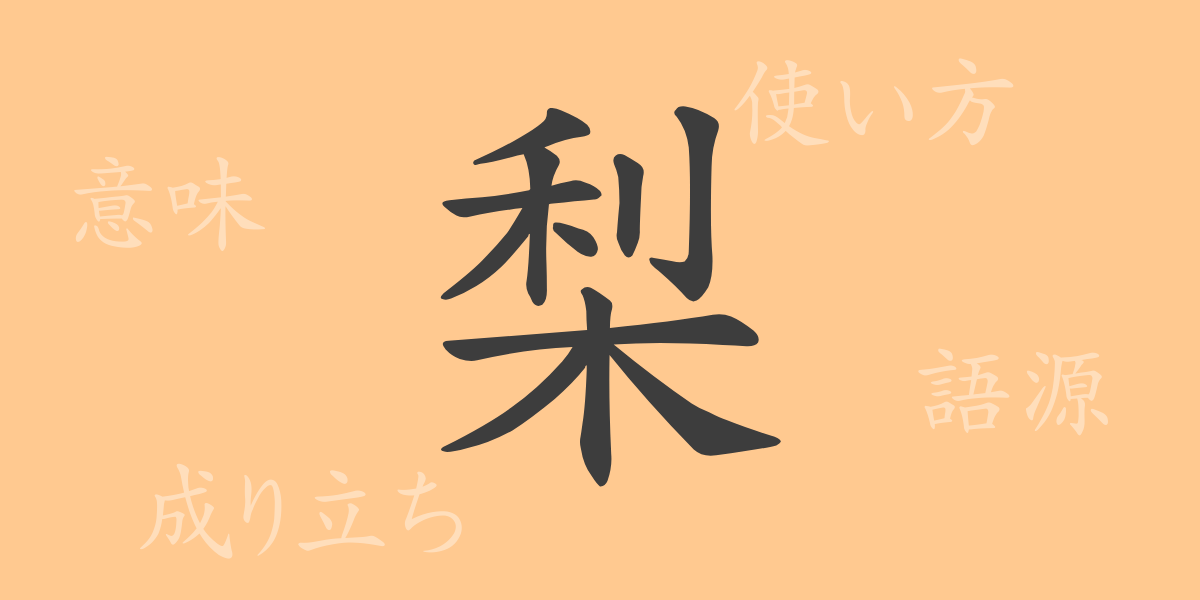Pears are not just a fruit in Japan. The Kanji ‘梨 (り)’ breathes deep history and occupies a special place in Japanese culture. This article will delve into the etymology, meaning, usage, readings, and phrases related to ‘梨’, enriching your knowledge with a comprehensive overview of this cherished element deeply rooted in people’s lives and various expressions. Enjoy the rich world of ‘梨’ through this exploration.
Origins of ‘梨 (り)’
The etymology of ‘梨’ traces back to ancient Chinese characters. The Kanji ‘梨’ combines the radical for ‘wood’ (木) and the phonetic element ‘利’, symbolizing the fruit that grows on trees. In Japan, pears have been cherished from ancient times and frequently mentioned in many documents. The sweet and juicy characteristics of pears have made them beloved throughout the ages.
Meaning and Usage of ‘梨 (り)’
While ‘梨’ primarily denotes the fruit, in Japanese, the pronunciation ‘なし (nashi)’ coincides with ‘無し (nashi)’, meaning ‘nothing’ or ‘without’, thus it’s also used to express the state of absence. Additionally, due to its pleasing shape and color, it is occasionally used metaphorically to describe beauty.
Readings, Stroke Count, and Radical of ‘梨 (り)’
The Kanji ‘梨’ is among the more familiar characters in Japanese.
- Readings: On’yomi ‘リ’, Kun’yomi ‘なし’
- Stroke Count: 11 strokes in total
- Radical: Wood (木)
Phrases, Idioms, and Proverbs Involving ‘梨 (り)’
There are numerous idioms and proverbs that include ‘梨’, each reflecting facets of Japanese wisdom and sensibility. For example, ‘梨の礫 (なしのつぶて)’ describes efforts that have no effect on the recipient, no matter how hard one tries. ‘梨花に雨 (りかにあめ)’ depicts the enhancement of beauty with additional blessings, as in rain falling on pear blossoms.
Conclusion on ‘梨 (り)’
This exploration has covered various aspects of the Kanji ‘梨’, from its etymology to its significance in Japanese culture, its usage, and literary expressions. ‘梨’ plays a pivotal role in Japanese culture, and idioms and proverbs themed around pears encapsulate the Japanese ethos and aesthetics, allowing us to experience culture through language. Understanding the multifaceted nature of ‘梨’ enriches our appreciation of the depth and complexity of the Japanese language.

























